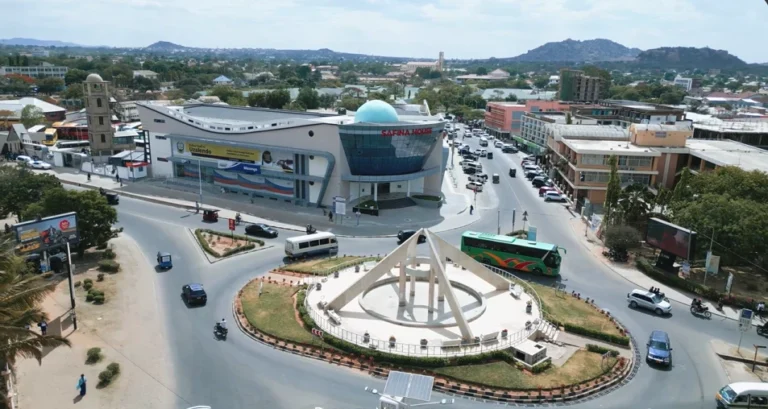Discover the CIA’s global intelligence network, from hacking facilities in Frankfurt to surveillance satellites in Australia. A thorough look at cyber warfare, dark sites, and international espionage.
When Jane Smith, a fictional character, touches down in Frankfurt, Germany, she appears like any other American traveller. Passport in hand, a few euros withdrawn from the ATM, she takes a taxi to her hotel. She tells the customs officer she’s here for “technical consultations at the consulate”.
That’s not the full story.
Jane is not a diplomat. She is a CIA hacker—part of a covert network operating out of one of America’s most fortified foreign outposts: the U.S. Consulate in Frankfurt. Her presence in Germany, like dozens of other agents scattered across continents, is part of a global intelligence infrastructure that thrives in legal grey zones and diplomatic shadows.
Frankfurt: The CIA’s Cyber Frontline in Europe
The U.S. Consulate General in Frankfurt is the largest of its kind in the world. Officially, it offers services to Americans in the region. Unofficially, it houses a covert CIA cyber unit: the Center for Cyber Intelligence Europe.
According to documents from the 2017 Vault 7 leak by WikiLeaks—one of the most significant exposures of CIA cyber activities in history—Frankfurt serves as a launchpad for digital operations across Europe, the Middle East, and Africa.
Within the consulate, agents like Jane pass through multiple layers of security. Visitors receive colour-coded badges. Heavy doors, Marine-guarded checkpoints, and surveillance systems ensure that only vetted personnel enter “Post 1”—the inner sanctum of U.S. cyber warfare in Germany.
From here, agents develop malware, exploit zero-day vulnerabilities, and deploy digital surveillance tools. These cyber weapons allow the CIA to turn everyday devices—phones, smart TVs, even cars—into microphones or tracking devices. Applications such as WhatsApp, Signal, and Telegram, long assumed secure, can be bypassed through these sophisticated attack vectors.
One such tool, codenamed “Fine Dining”, enables close-contact infiltration of air-gapped systems—those not connected to the internet—often in critical infrastructure settings. And here, Frankfurt’s strategic location becomes key: the Schengen Agreement allows U.S. agents freedom of movement throughout Europe, enabling covert physical access to targets with minimal border scrutiny.
A Training Ground Called “The Farm”
Before Jane reached Frankfurt, she trained at a place known within intelligence circles simply as “The Farm”.
Located near Williamsburg, Virginia, Camp Peary is a CIA training facility veiled in secrecy. There, recruits undergo intensive instruction—firearms handling, surveillance, explosives, interrogation resistance, and border infiltration. Realistic exercises include mock kidnappings and imprisonment. For higher-level field operations, agents are sent to Harvey Point, the facility where the Navy SEAL raid on Osama bin Laden was rehearsed.
These facilities simulate life in the field—precisely what Jane experiences in her mission. The training prepares agents for interrogation, customs scrutiny, and emergency scenarios anywhere in the world.
Australia: Spies in the Outback
Jane’s next assignment takes her to Alice Springs, Australia, home to another keystone in the U.S. intelligence architecture: Pine Gap.
On the surface, Pine Gap is the “Joint Defence Facility,” a collaborative effort between the U.S. and Australian governments. In truth, it’s one of America’s most crucial satellite tracking and signal intelligence bases on Earth.
Its 38 golf-ball-shaped radomes hide antennas communicating with U.S. spy satellites such as Orion 3, 5, 7, and 9. These satellites collect electronic signals from vast regions—Europe, Africa, the Middle East, and Asia.
Pine Gap is central to surveillance programmes like ECHELON and XKeyscore, revealed in the Snowden leaks, which intercept online chats, phone calls, and emails globally. The intelligence gathered is routed to the Operations Building, an Ikea-sized command centre where agencies like the CIA and NSA process high-value data 24/7.
The base has played a pivotal role in U.S. drone operations and battlefield targeting. But its involvement in recent global conflicts—including allegations of aiding Israeli operations in Gaza—has sparked widespread protests in Australia, reigniting debate about sovereignty, transparency, and foreign military presence.
Black Sites: The CIA’s Shadow Prisons
If Pine Gap and Frankfurt represent the high-tech, data-driven face of American intelligence, the CIA’s black sites tell a darker story.
These clandestine prisons—officially denied for years—were part of the agency’s extraordinary rendition programme, where suspected terrorists were kidnapped, blindfolded, and flown to undisclosed detention centres for interrogation.
In 2006, President George W. Bush finally acknowledged the existence of these facilities. The most infamous is Guantánamo Bay, but dozens more were scattered across allied nations, often with the tacit approval of local governments.
One such site was uncovered in Stare Kiejkuty, Poland. Codenamed Quartz, this CIA-run facility held detainees in the early 2000s. The Polish government long denied its existence, but in 2014, the European Court of Human Rights ruled that Poland violated international law by hosting the prison.
According to reports, some rendition operations were planned from CIA outposts like the one in Frankfurt. Meanwhile, the farm was allegedly used to train agents for these missions, including psychological conditioning and resistance techniques.
Despite a 2009 executive order by President Obama to close all black sites, Guantánamo still holds around 30 detainees today—many of them never formally charged.
The American Spy Next Door?
Whether it’s agents slipping through European customs, Australians sharing beers with CIA hackers in casinos, or secret facilities monitoring millions from the skies, the global reach of the CIA is hard to overstate.
While some argue such programmes are necessary in an age of cyber threats and terrorism, others question the legality and ethics of these covert operations—especially when conducted on foreign soil, far from the eyes of the public or the protections of national law.
For now, agents like Jane continue to criss-cross the globe under diplomatic cover, backed by a trillion-dollar infrastructure built on secrecy, software, and silent power.
Based on the documentary “How a CIA Base Works” by the YouTube channel fern.










+ There are no comments
Add yours